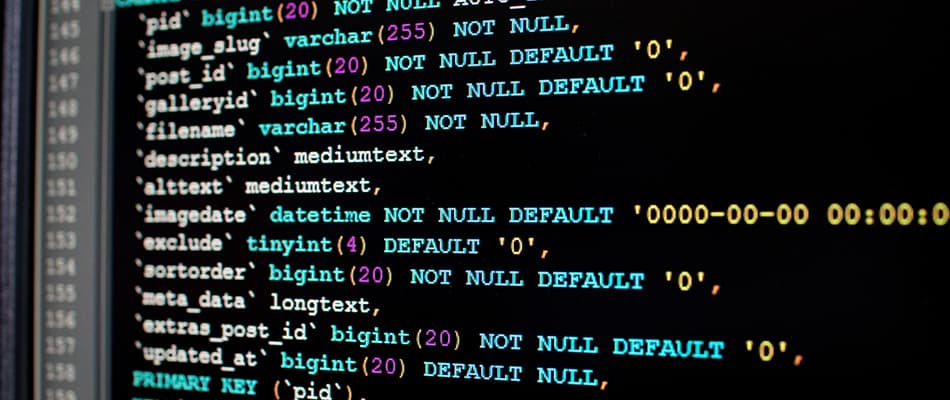Characteristics of Project Management. Learn Tools, Techniques, and More
Project management helps teams achieve their goals by managing resources, timelines, and risks. It ensures everything runs smoothly and keeps everyone working towards the same objectives. Knowing the characteristics of project management is important to handle challenges like limited resources and tight deadlines. With clear goals, proper scope management, good communication, and quality control, projects stay organised and finish on time and within budget. Whether you’re working on small tasks or big projects, mastering these skills helps you manage challenges and achieve great results.
In this article, we will explore the important characteristics of project management, project management process, tools and techniques and common challenges faced.
Key Characteristics of Project Management
Project management helps teams organise, plan, and complete tasks to reach specific goals. It ensures that resources, timelines, and risks are well managed, keeping everyone aligned with the project’s objectives. The key characteristics such as clear goals and teamwork, help projects run smoothly and stay on track. Knowing these characteristics helps teams handle challenges better and complete their work on time and within budget.
Here are the seven essential characteristics highlighted for effective project management:
-
Clear Objectives
Setting clear objectives is one of the characteristics of project management, which ensures that everyone on the team knows exactly what the project aims to achieve. These objectives provide direction, making sure each team member understands their role and tasks. They also help track progress by breaking the project into smaller, measurable steps. With specific goals in place, project managers can organise resources smoothly, ensuring everyone focuses on the right priorities. Clear objectives reduce misunderstandings and delays, helping the project stay on track from start to finish.
-
Defined Scope
The project scope defines what tasks need to be done and what deliverables are expected. It sets clear boundaries so the team knows what to focus on. One of the main characteristics of project management is maintaining a well-defined scope, helping the team avoid extra work that wasn’t planned. This keeps the project on time and within budget. Proper scope management also prevents scope creep, which can cause delays and increase costs.
-
Time Management
Time management keeps the project on schedule by dividing tasks into manageable timelines. It involves setting deadlines, tracking progress, and making changes if things get off track. This ensures that the team stays focused and avoids rushing at the last minute. Meeting milestones on time helps maintain steady progress. Good time management ensures the project runs smoothly and finishes as planned.
-
Resource Management
Resource management ensures that the team has the right budget, people, and materials. It prevents the overuse of resources and keeps costs under control. This ensures that the project stays within budget and avoids delays. Each person knows what they need to do, helping them work easily. Managing resources well keeps the project running smoothly without interruptions.
-
Communication and Collaboration
Clear communication helps everyone stay informed and work smoothly together. Short meetings and regular updates keep team members on the same page. Clear instructions reduce confusion and prevent mistakes. When teams from different areas work together, they solve problems faster. Good collaboration makes sure tasks are done properly, helping the project run smoothly.
-
Quality Control
Quality control ensures that project results meet expectations. It involves setting standards from the start and checking work regularly. Problems are fixed early to avoid bigger issues later. Meeting quality goals builds trust with stakeholders and keeps them happy. It also prevents rework, saving time and effort during the project.
Project Management Process
In the previous section, we explored the characteristics of project management. Now, it’s equally important to understand the steps involved in how it works. The project management process includes different phases that guide teams from the beginning of a project to its successful completion. These phases ensure that tasks are well-organised, deadlines are met, and resources are used efficiently.
Below is a breakdown of the several phases involved in the project management process:
- Initiation – In this phase, the project’s goals and objectives are identified. The team also checks the project’s feasibility and creates a rough plan to start the process.
- Planning – In this phase, detailed plans are made, including timelines, resource allocation, and budget estimates. A well-organised plan ensures the team stays focused and achieves project goals effectively.
- Execution – In this phase, tasks are carried out according to the plan. Teams work together to complete their assigned activities, and managers monitor progress to keep everything on track.
- Monitoring & Controlling – In this phase, the team keeps a close eye on the project’s progress to ensure it stays aligned with the original plan. Managers track performance and make necessary changes to avoid delays or budget issues.
- Closure – In this phase, the project wraps up as all tasks are completed and the final product is delivered. The team also reviews what worked well and documents lessons for future projects.
Tools and Techniques in Project Management
Tools and techniques shape the characteristics of project management by helping managers organise tasks, manage timelines, and coordinate team efforts smoothly. These tools assist in assigning tasks, handling resources, and maintaining clear communication within teams. Using these techniques ensures that project management stays organised, making meeting deadlines and controlling costs easier. Understanding these tools is essential for building strong project management skills and keeping projects on track.
Here are the tools and technologies used in Project Management:
- Gantt Charts – Gantt charts are visual tools that display a project’s timeline. They help project managers see deadlines, milestones, and how different tasks connect. This makes it easy to organise tasks and ensure everyone understands their responsibilities.
- Kanban Boards – Kanban boards help organise tasks into simple categories like ‘To Do,’ ‘In Progress,’ and ‘Completed.’ They show what tasks are being worked on and what’s done, helping teams manage work smoothly without delays. An event driven kanban board is one such example.
- Task Management Software – Tools like Trello and Asana allow teams to create, assign, and organise tasks by priority. They also help managers keep track of progress and deadlines, making sure everyone stays on the same page and works towards the project goals.
- Resource Management Tools – Software like Microsoft Project helps manage time, budget, and team resources effectively. It ensures that no one on the team is overloaded with work and that resources are used wisely throughout the project.
- Communication Platforms – Tools like Slack and Microsoft Teams make it easy for teams to share updates, ask questions, and solve problems quickly. These platforms keep everyone connected and help teams work together smoothly.
Common Challenges in Project Management
Managing a project means handling different tasks that need proper planning, organisation, and action. But challenges are a normal part of the process and can slow things down. Even with the characteristics of project management, such as setting clear goals, managing resources, and promoting teamwork, issues like changing requirements and poor communication can still occur. Teams also often face issues like limited resources, tight deadlines, and unexpected risks. Being aware of these challenges helps teams stay ready and solve problems early to keep the project on track.
Below are the common challenges in Project Management:
- Unclear Project Goals – When project goals are not clear, it can confuse team members and cause delays. If people don’t know what to focus on, they might waste time and effort. Setting clear goals, which is an important characteristic of project management, ensures everyone knows their tasks and stays on track.
- Unrealistic Deadlines – Tight deadlines can put too much pressure on the team and lower the quality of work. When deadlines are unrealistic, it’s hard to get things done properly. Setting reasonable timelines helps the team work efficiently without getting tired or making mistakes.
- Scope Creep – When new tasks are added without adjusting the plan, the project can be thrown off course. This can cause delays and go over budget. Managing the project scope carefully helps keep everything aligned with the original plan and avoids unnecessary work.
- Poor Communication – Good communication is essential for smooth teamwork. If team members don’t communicate well, it can cause confusion and mistakes. Using communication tools keeps everyone informed and connected, helping the team stay on the same page.
- Limited Resources – Working with limited time, budget, or people can be tough. If resources are not managed well, the team may struggle to finish tasks on time. Proper resource management, a key characteristic of project management, ensures the team works efficiently without feeling overwhelmed.
- Risk Management Issues – Unexpected risks can appear during a project, affecting timelines and budgets. Without a plan, these risks can cause delays. Having a good risk management plan helps the team identify risks early, respond quickly, and keep the project running smoothly.
Learn Project Management with Digital Regenesys
Learning project management helps students build important skills in planning and handling risks, which can lead to exciting job opportunities. These skills are important for completing tasks successfully and succeeding in different jobs. Many online certifications offer practical knowledge to build these abilities. A good starting point is the Project Management Course by Digital Regenesys, which provides live sessions and hands-on training with real-world tools. Throughout the course, students also explore essential concepts and strategies that align with the characteristics of project management, such as goal setting, resource management, and effective teamwork.
Below are the benefits of studying project management with Digital Regenesys:
- Career Advancement – The course enhances career opportunities by providing essential project management skills that are highly valued across various industries.
- Hands-on Experience – Students gain practical knowledge through real-world projects, improving their ability to manage tasks and handle projects of different scales.
- Detailed Curriculum – The course covers all key areas, including planning, execution, monitoring, and project closure, preparing students for the full project management lifecycle.
- Skill Enhancement – Students develop critical skills such as time management, leadership, and resource allocation, which are essential for project success.
- Training in Industry-Standard Tools – Students learn to use top project management tools like Microsoft Project Plan (MPP), enhancing their efficiency and technical skills.
- Global Exposure – The course focuses on international project management, equipping students to work confidently in diverse global environments.
- Live Sessions and Career Guidance – Students benefit from live classes and expert career counselling to help them apply their skills and make informed career decisions.
- Flexible Learning – The online format makes the course accessible to students and professionals in South Africa, Nigeria, Kenya, Uganda, and Tanzania.
- Globally Recognised Certification – Graduates receive a globally recognised certificate, boosting their professional credibility and career prospects in the job market.
Therefore, understanding the characteristics of project management is crucial for successful project delivery. Managing resources, ensuring quality control, and meeting deadlines help teams stay organised and efficient. These skills also assist in tackling challenges like scope creep and communication gaps. Using smart strategies ensures smooth teamwork and keeps the project on track. With the right tools and methods, teams can deliver quality results on time. By offering flexible, online learning and globally recognised certification, Digital Regenesys prepares students for various project management roles, contributing significantly to personal and professional growth.
FAQs on Characteristics of Project Management
What are the essential characteristics of project management?
The essential characteristics of project management include clear objectives, defined scope, time management, resource management, and effective communication. These elements help teams stay focused, use resources efficiently, and complete tasks on time and within budget.
How do the 5 characteristics of project management impact success?
The five key characteristics of project management are clear objectives, defined project scope, effective time management, quality control, and teamwork which are essential for project success. These elements help prevent delays, manage risks, and ensure smooth collaboration among team members, which ultimately leads to successful project completion.
Why is resource management an essential characteristic of project management?
Resource management is an essential characteristic of project management as it ensures efficient use of time, people, and budget, helping teams avoid overuse and complete tasks within the project’s limits.
How do project management tools support essential characteristics of project management?
Tools like Gantt charts and task management software help organise tasks, track progress, and improve communication, ensuring smooth workflows and timely delivery.
What challenges affect the 5 characteristics of project management?
Challenges like scope creep, unclear goals, and poor communication can disrupt projects. Effective planning, risk management, and teamwork help keep projects on track.
Recommended Posts













